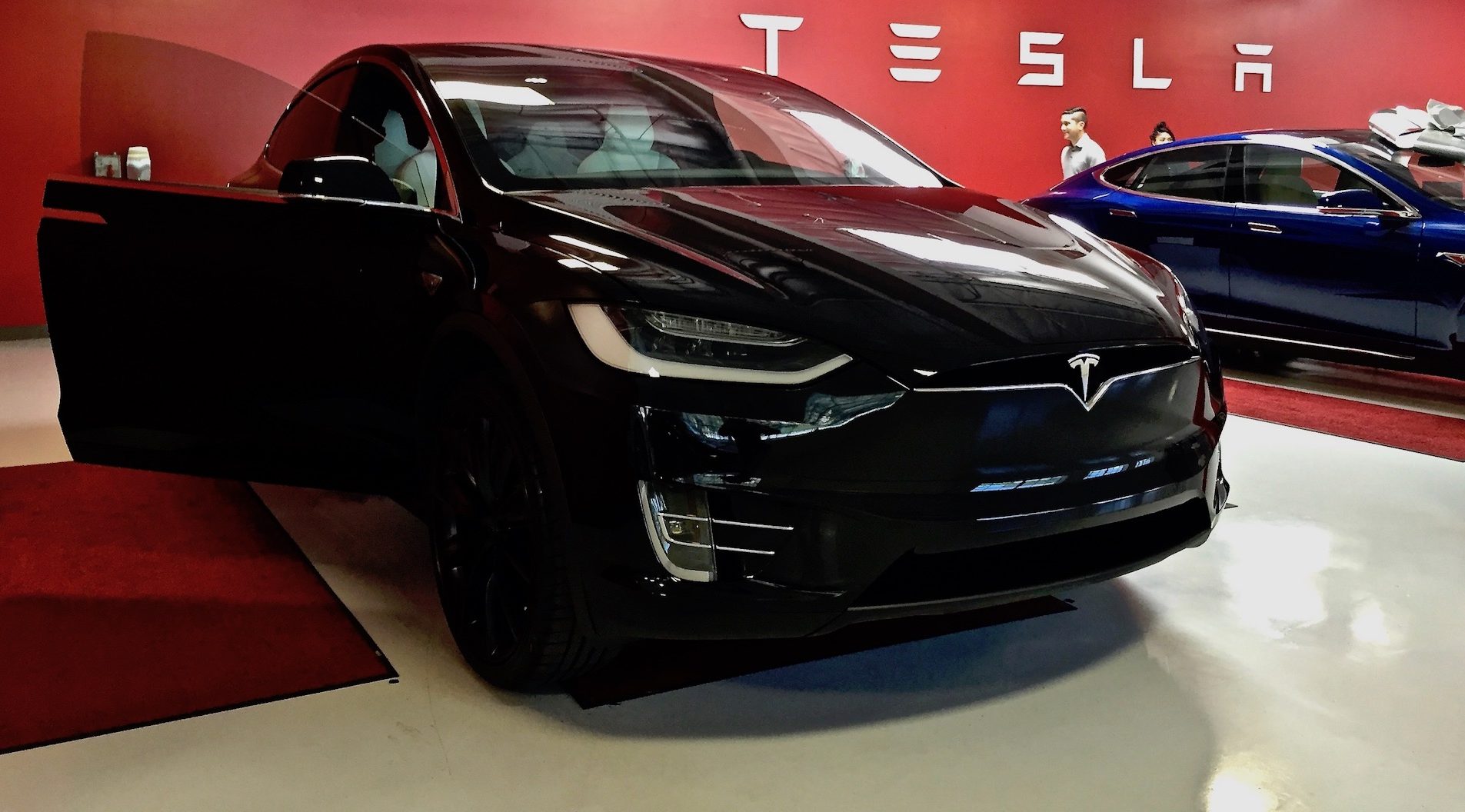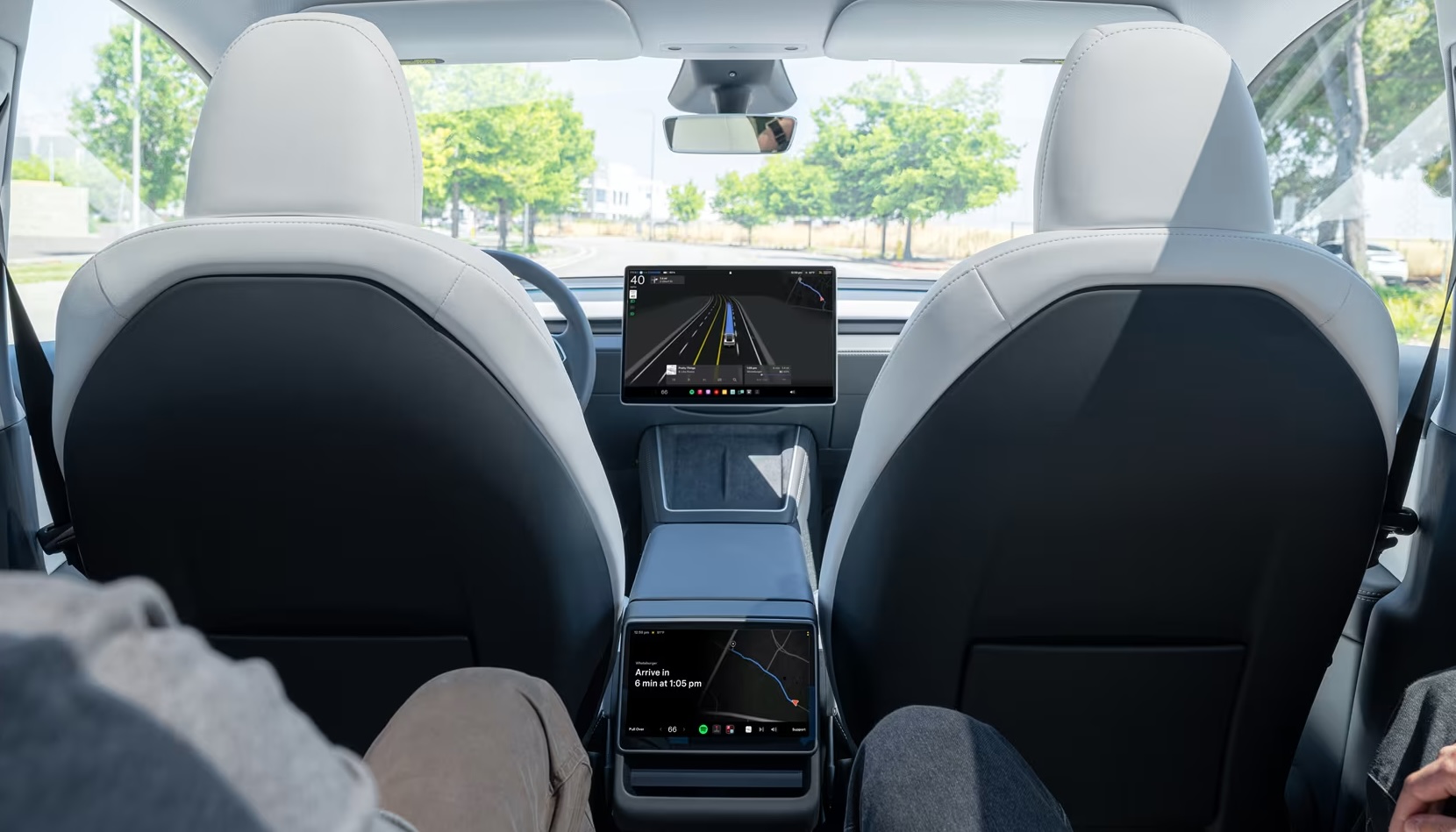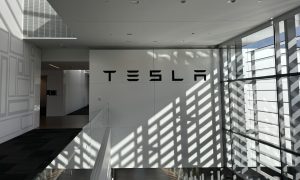

News
Tesla is looking to eliminate contracts for faster vehicle delivery process
In what appears to be yet another initiative to deliver as many of its electric cars as possible to customers, Elon Musk has announced that Tesla is trying to get rid of paper contracts completely. According to Musk, Tesla’s delivery process should be as simple as a tap on a screen. Under the system, returns for Tesla’s vehicles should be a lot simpler as well.
Musk’s Twitter update came as a response to Tesla enthusiast JD Mankovsky, who noted that his sister-in-law has been in a delivery center for hours waiting for her all-electric SUV’s contracts to be finished. Mankovsky stated that there was a backlog in the delivery center’s contract/legal approval level, causing handovers to be delayed. In classic fashion, Musk promptly responded with an idea in tow.
We’re trying to get rid of contracts completely. Should just be “tap here & you get your car”. Then, if you don’t like it for any reason, just return it like any other product.
— Elon Musk (@elonmusk) July 23, 2018
If Tesla does employ what could pretty much be described as a tap and drive system, it would be yet another way for the company to separate itself from the conventions of the traditional auto industry. Issuing and signing contracts, after all, are a well-known, time-consuming aspect of the vehicle delivery process, and it is one practice that Tesla still engages in today. By getting rid of paper contracts, Tesla will separate itself even more from traditional auto sales practices. Such a practice will also make the buying experience of Tesla’s vehicles more similar to consumer tech products than conventional cars.
In a way, using a digital signing system for its vehicles is a strategic move for Tesla. The use of digital contracts, after all, has only been growing over the years. In the United States alone, digital signatures are an option for filing tax returns over the internet, and that is valid in every state today. Tesla would likely need to adapt to additional regulations if or when it starts using digital contracts, but the transition could be done.
Elon Musk’s statement about returning vehicles if customers are not satisfied further emphasizes the idea that Tesla’s vehicles are more like computers on wheels than regular vehicles. Elon Musk has, over the years, underscored the idea that Tesla is a different breed of carmaker, not only in terms of its products but also in terms of its business practices. Returning cars to the company in a manner similar to returning an iPhone to Apple definitely falls under that category. Returned vehicles could even give the company a considerable revenue. Apple, for one, usually uses returned units to be sold later on as refurbished devices. Tesla could employ a similar strategy, opening a lineup between its brand new and CPO offerings.
Looking at Elon Musk’s tweet in the short-term, the removal of traditional paper contracts seems to be yet another way for Tesla to increase its delivery figures. The company, after all, is currently pushing for profitability this third quarter. For Tesla to do this, it would have to deliver as many cars as it can to customers, particularly higher-margin vehicles like the Model 3 Performance, the Model S P100D, and the Model S P100D. Such a system ties in perfectly with the company’s new 5-Minute Sign & Drive system for Model 3 deliveries as well.
In a way, Tesla’s efforts to expedite the deliveries of its vehicles are in the best interests of the company’s customers. Earlier this month, Tesla announced that it had sold its 200,000th electric car in the United States, triggering the phase-out period for the $7,500 tax credit granted to its customers. The tax credit is set to decrease over the next quarters and fully expire by December 2019. Thus, from this point until the end of next year, it would be up to Tesla to deliver as many vehicles as possible to ensure that its customers qualify for a federal tax credit.
News
Tesla begins Robotaxi certification push in Arizona: report
Tesla seems serious about expanding its Robotaxi service to several states in the coming months.

Tesla has initiated discussions with Arizona transportation regulators to certify its driverless Robotaxi service in the state, as per a recent report from Bloomberg News. The move follows Tesla’s launch of its Robotaxi pilot program in Austin, Texas, as well as CEO Elon Musk’s recent comments about the service’s expansion in the Bay Area.
The Arizona Department of Transportation confirmed to Bloomberg that Tesla has reached out to begin the certification process for autonomous ride-sharing operations in the state. While details remain limited, the outreach suggests that Tesla is serious about expanding its driverless Robotaxi service to several territories in the coming months.
The Arizona development comes as Tesla prepares to expand its service area in Austin this weekend, as per CEO Elon Musk in a post on X. Musk also stated that Tesla is targeting the San Francisco Bay Area as its next major market, with a potential launch “in a month or two,” pending regulatory approvals.
Tesla first launched its autonomous ride-hailing program on June 22 in Austin with a small fleet of Model Y vehicles, accompanied by a Tesla employee in the passenger seat to monitor safety. While still classified as a test, Musk has said the program will expand to about 1,000 vehicles in the coming months. Tesla will later upgrade its Robotaxi fleet with the Cyercab, a two-seater that is designed without a steering wheel.
Sightings of Cybercab castings around the Giga Texas complex suggests that Tesla may be ramping the initial trial production of the self-driving two-seater. Tesla, for its part, has noted in the past that volume production of the Cybercab is expected to start sometime next year.
In California, Tesla has already applied for a transportation charter-party carrier permit from the state’s Public Utilities Commission. The company is reportedly taking a phased approach to operating in California, with the Robotaxi service starting with pre-arranged rides for employees in vehicles with safety drivers.
News
Tesla sets November 6 date for 2025 Annual Shareholder Meeting
The automaker announced the date on Thursday in a Form 8-K.

Tesla has scheduled its 2025 annual shareholder meeting for November 6, addressing investor concerns that the company was nearing a legal deadline to hold the event.
The automaker announced the date on Thursday in a Form 8-K submitted to the United States Securities and Exchange Commission (SEC). The company also listed a new proposal submission deadline of July 31 for items to be included in the proxy statement.
Tesla’s announcement followed calls from a group of 27 shareholders, including the leaders of large public pension funds, which urged Tesla’s board to formally set the meeting date, as noted in a report from The Wall Street Journal.
The group noted that under Texas law, where Tesla is now incorporated, companies must hold annual meetings within 13 months of the last one if requested by shareholders. Tesla’s previous annual shareholder meeting was held on June 13, 2024, which placed the July 13 deadline in focus.
Tesla originally stated in its 2024 annual report that it would file its proxy statement by the end of April. However, an amended filing on April 30 indicated that the Board of Directors had not yet finalized a meeting date, at least at the time.
The April filing also confirmed that Tesla’s board had formed a special committee to evaluate certain matters related to CEO Elon Musk’s compensation plan. Musk’s CEO performance award remains at the center of a lengthy legal dispute in Delaware, Tesla’s former state of incorporation.
Due to the aftermath of Musk’s legal dispute about his compensation plan in Delaware, he has not been paid for his work at Tesla for several years. Musk, for his part, has noted that he is more concerned about his voting stake in Tesla than his actual salary.
At last year’s annual meeting, TSLA shareholders voted to reapprove Elon Musk’s compensation plan and ratified Tesla’s decision to relocate its legal domicile from Delaware to Texas.
Elon Musk
Grok coming to Tesla vehicles next week “at the latest:” Elon Musk
Grok’s rollout to Tesla vehicles is expected to begin next week at the latest.

Elon Musk announced on Thursday that Grok, the large language model developed by his startup xAI, will soon be available in Tesla vehicles. Grok’s rollout to Tesla vehicles is expected to begin next week at the latest, further deepening the ties between the two Elon Musk-led companies.
Tesla–xAI synergy
Musk confirmed the news on X shortly after livestreaming the release of Grok 4, xAI’s latest large language model. “Grok is coming to Tesla vehicles very soon. Next week at the latest,” Musk wrote in a post on social media platform X.
During the livestream, Musk and several members of the xAI team highlighted several upgrades to Grok 4’s voice capabilities and performance metrics, positioning the LLM as competitive with top-tier models from OpenAI and Google.
The in-vehicle integration of Grok marks a new chapter in Tesla’s AI development. While Tesla has long relied on in-house systems for autonomous driving and energy optimization, Grok’s integration would introduce conversational AI directly into its vehicles’ user experience. This integration could potentially improve customer interaction inside Tesla vehicles.
xAI and Tesla’s collaborative footprint
Grok’s upcoming rollout to Tesla vehicles adds to a growing business relationship between Tesla and xAI. Earlier this year, Tesla disclosed that it generated $198.3 million in revenue from commercial, consulting, and support agreements with xAI, as noted in a report from Bloomberg News. A large portion of that amount, however, came from the sale of Megapack energy storage systems to the artificial intelligence startup.
In July 2023, Musk polled X users about whether Tesla should invest $5 billion in xAI. While no formal investment has been made so far, 68% of poll participants voted yes, and Musk has since stated that the idea would be discussed with Tesla’s board.
-

 Elon Musk1 week ago
Elon Musk1 week agoTesla investors will be shocked by Jim Cramer’s latest assessment
-

 Elon Musk3 days ago
Elon Musk3 days agoElon Musk confirms Grok 4 launch on July 9 with livestream event
-

 Elon Musk15 hours ago
Elon Musk15 hours agoxAI launches Grok 4 with new $300/month SuperGrok Heavy subscription
-

 News7 days ago
News7 days agoTesla Model 3 ranks as the safest new car in Europe for 2025, per Euro NCAP tests
-

 Elon Musk2 weeks ago
Elon Musk2 weeks agoA Tesla just delivered itself to a customer autonomously, Elon Musk confirms
-

 Elon Musk1 week ago
Elon Musk1 week agoxAI’s Memphis data center receives air permit despite community criticism
-

 Elon Musk2 weeks ago
Elon Musk2 weeks agoTesla’s Omead Afshar, known as Elon Musk’s right-hand man, leaves company: reports
-

 News2 weeks ago
News2 weeks agoXiaomi CEO congratulates Tesla on first FSD delivery: “We have to continue learning!”














